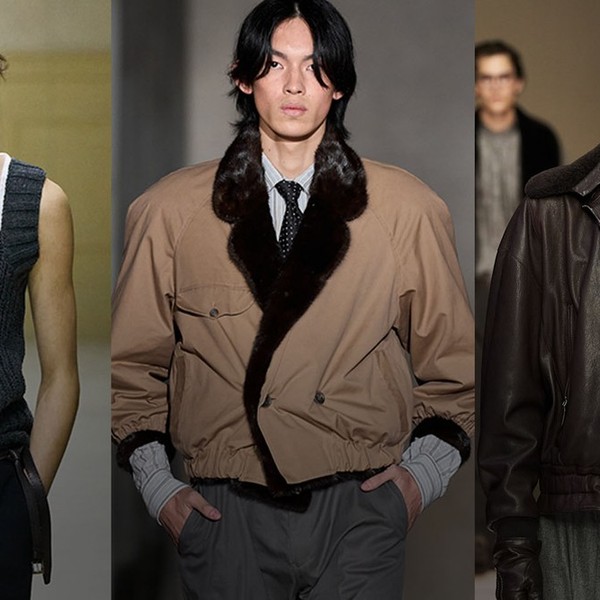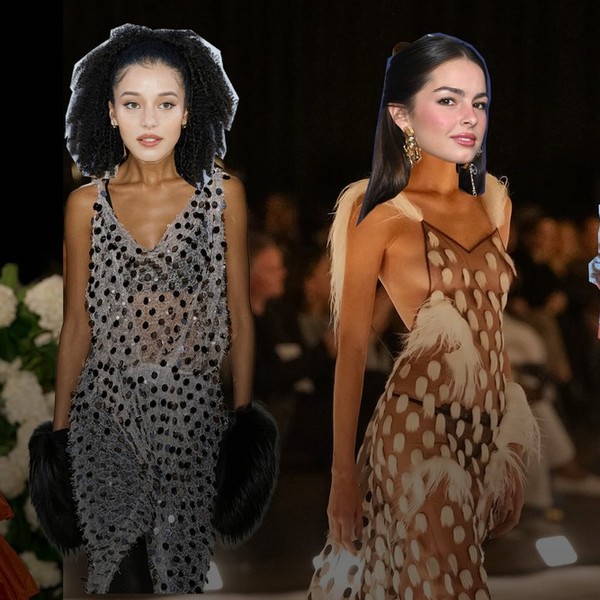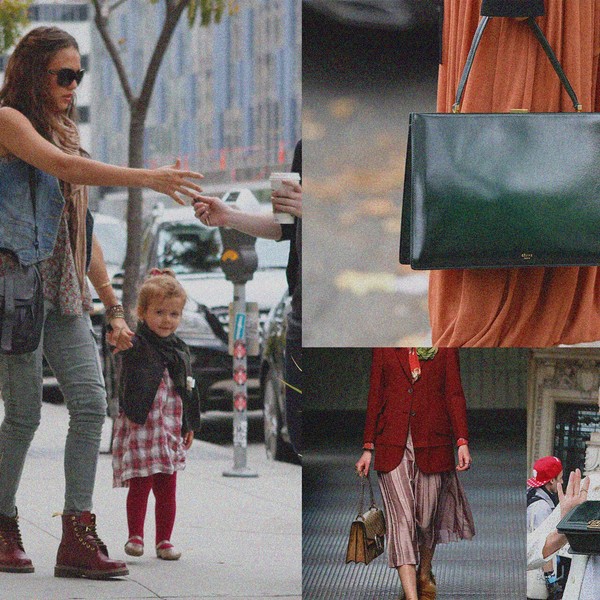Origami Customs Is Shaping the Future of Genderless Undergarments
"We are a team of queer and trans people who understand what it’s like to not be able to find [undergarments] that make us feel good in our bodies."

Like most clothing, undergarments are often placed in two categories: "women's" and "men's." But what if we lived in a world where undergarments were gender-neutral? Understanding the need for undergarments that nonbinary and trans people truly feel comfortable in, Rae Hill launched Origami Customs over a decade ago to make that world a reality.
"As a whole, [genderless] doesn’t have to be restrained into an androgynous middle ground, which is what often gets done in a very reductionist fashion," explains Hill, who identifies as queer, trans, and nonbinary. "Because we do basics, sometimes it comes down to things that are simply patterned, but my idea is that it becomes a foundation of a really rich creative process for people who self-identify through fashion."
Aside from providing genderless undergarments for its customers known as "underthings," Origami Customs collaborates with nonprofit organizations to supply gender-affirming garments worldwide. While doing so, Hill and their team work together locally in Montreal, Canada, on everything from sourcing to manufacturing to marketing. The team is representative of the community they want to serve and aims to honor the LGBTQ+ icons who’ve paved the way for their work.
Below, Hill spoke to Coveteur about the inspiration behind Origami Customs, the company's approach to sustainability, their hopes for the future of genderless undergarments, and more.

Rae Hill, the founder of Origami Customs.
Photo: Courtesy of Origami Customs
What inspired you to create Origami Customs?
“I’m a queer, trans, nonbinary person. I come from a sociology background, so I started this company with the aim of not only bringing gender-affirming garments to an underrepresented community and market, but also with the aim of creating mutual aid programs and a company that exists within a capitalist system and subverting some of the ways fashion is normally produced and represented online.
We are a team of queer and trans people who understand what it’s like to not be able to find [undergarments] that make us feel good in our bodies. First and foremost, we represent the community and start at home with treating people right. Nothing is made overseas and we try to give back to our local community as well. We’re a brand, but we’re also an organization. We have partnerships with NGOs around the world to get the gender-affirming products that we make out to people who face access barriers. That’s the only ethical way I could participate in capitalism—through this model I’m trying to create that I haven’t really seen anywhere else.”
How did you decide to label your products as “underthings” rather than underwear or undergarments?
“It seems like a term that would feel more affirming across the gender-diverse spectrum. It’s really just a personal choice based on my experience. Underwear is generally a feminine-coded term. We don’t really see men’s lingerie or men’s underwear. So for people trying to navigate their way through, 'What products are for me?' I try to [use] something across the board.
One of things we’re doing now is creating a fit for anyone. Any undergarments that have a bottom half to them can be created into any fit, meaning anyone with any type of genitalia can buy each piece. So there’s not necessarily just gender-affirming garments and ‘normal’ garments because that is just setting cis normativity as the standard. It took some time to figure a way out of that box. I think it will level the playing field and make it so there’s no norm and more people can have access to the styles they want without feeling restricted by ‘this is what a gender-affirming garment looks like,’ or ‘this is what a garment for cis people look like.’”
Can you talk about your approach to sustainability? Is custom-sizing part of that sustainability focus?
“There are a couple of different avenues that we see sustainability from. The main one is custom-sizing for sure. It has a lot to do with cost per wear. So essentially if you get a garment that fits you really well, you’re going to wear the shit out of it. You’re going to have that garment for a really long time. And the way we make it is to last. It’s not going to be something that sits in the back of your closet and it’s not going to be thrown out after a year. It's important to keep things out of landfills.
There are other aspects, like where we source our materials. We take an ethical standpoint of where it’s coming from by trying to source locally and using deadstock when we can. Our manufacturing is done in our Montreal studios [as well], so we don’t do any manufacturing overseas. That’s never going to change. Also, ethics [is part of that focus because] there’s quite an intersection [between ethics and sustainability]. We take care of the people who make our garments."
How does the company work with non-governmental organizations (NGOs)?
“We have 15 organizations that we work with around the world, predominantly in the States and some in Canada, Europe, and Australia. We’re always looking for more. The main organization we work with right now in the States is Point of Pride. They’re a fantastic organization that has been getting government funding to distribute garment-affirming garments and they do trans-affirming surgery funds for people who can’t access trans-affirming care. We are their supplier of trans-fem shapewear and gaffs. [We] supply them 150 garments per month that they then distribute [without] much access barriers. People can email and self-identify ‘I’m a person in need of a gaff, but I can’t afford it’ and that is the same around the world. To have such ease of access, that’s a really incredible partnership. We’re just ramping that up as much as we can.”
How do you think the fashion industry has impacted the way we perceive genderless undergarments and genderless fashion in general?
“When I think about the fashion industry representing what they see as unisex fashion, it calls to things that are very beige and boxy and drab. For me, it’s not very exciting. So I think when [the fashion industry] takes the gender out of something it takes away the creativity and the history of beautiful queer and trans fashion that was primarily started by trans women of color, where we get a lot of our trends these days. It kind of sucked the soul out of that fashion style for our community. So even though I try to create items that transcend the binaries of fashion, I really try to enliven them with that creativity that comes from a really rich history that I don’t want to be forgotten.”
Do you find that your customer base is across generations, or mainly Gen Z who tends to be more inclusive in general?
“I do see a mix, but there has been a shift recently for us [receiving more Gen Z customers]. People are finding us very differently depending on the generation. Although COVID made things different because we did have a lot more older millennials starting to [buy from us]. This is my theory: When people were staying home more and didn’t have to participate in the workforce in the same way, people were exploring their gender more and had more opportunity to spend time thinking about what makes them feel good and picking out items that were affirming in ways that they might not have wanted to explore publicly before the pandemic.
There’s been a little fluctuation, which is really interesting to see, but more and more we’re seeing younger people exploring their gender and finding us. [What we do see] is younger people are not as financially able to support an ethical brand, where our prices might be a little higher. The buy-in is a little more, but through our NGO programs, especially through Point of Pride who distributes gaffs throughout the world for free for trans femmes, we see a lot of people finding us through that program. Honestly, with a lot of the younger generations, there’s more of a commitment to sustainability and ethical fashion, which is incredible. People are saying, ‘All I can afford is one right now, but it’s important that I buy from you for XYZ reasons.’ It resonates with my vision of how fashion should be and how we can contribute [to the industry]. There are a lot of politics involved and I love seeing people being vocal about it.”
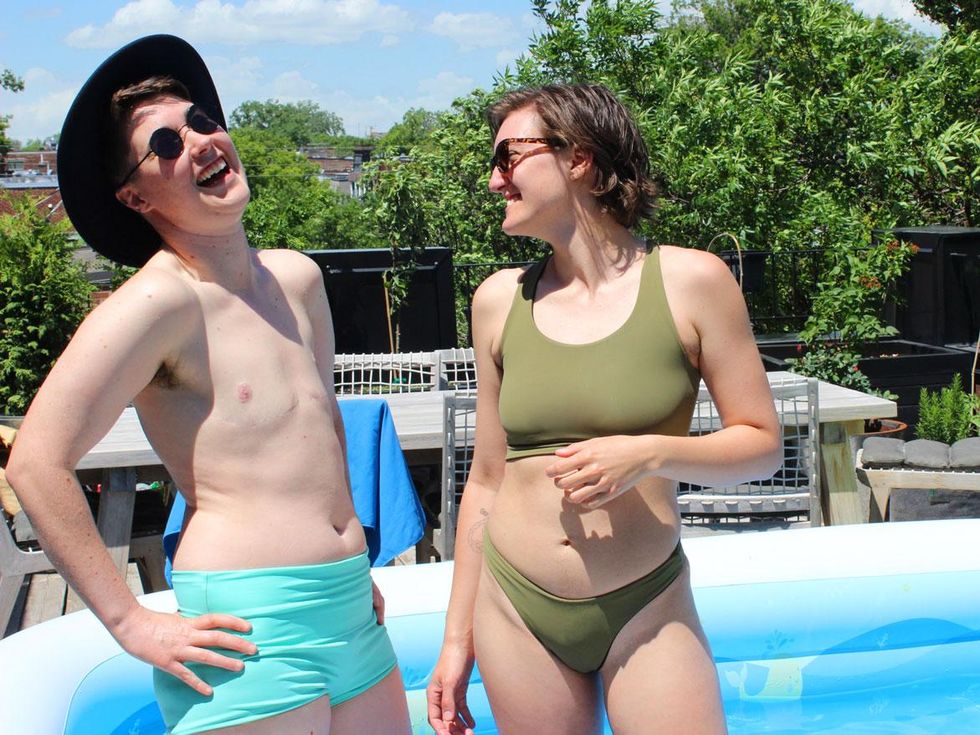
The brand's line of gender-affirming swimwear.
Photo: Courtesy of Origami Customs
What are some of the challenges you’ve faced while creating and developing your company?
“There has been a lot of variations of this company and some of the things I’m more proud of are the substantial challenges like manufacturing [locally]. It comes down to [the following question]: Do we want to look like another big brand and make a lot of profit, or do we really care about the lives of the people involved? It’s challenging to make those ethical decisions. We’re not producing things en masse like other brands are. It’s challenging to do everything from a personal voice, to try to play with the big players and make sure people know about us because we’re not working with the same budgets as the big brands, but we also don't want to be at that level because that means [making] sacrifices we’re not willing to make.”
What is the Origami Customs model casting process like? How do you ensure that you feature a diverse group of people in your imagery across your site and socials?
“It’s one [thing] to say, ‘We have diverse models.’ Anyone can say that, but what does that really mean? [Our] process is trying to find people that reflect the community without doing lip service. It’s not just, 'Oh we need x percentage of people of this ethnicity, or one person of visible disability.’ When we are looking for people who model, we do open casting and work with people directly here in Montreal. We try to work with people who are really enthusiastic about being a part of [the campaign]. We work with upcoming models who want to get experience and face access barriers. A lot of times, it’s queer and trans people who didn’t have much opportunities in the modeling world."
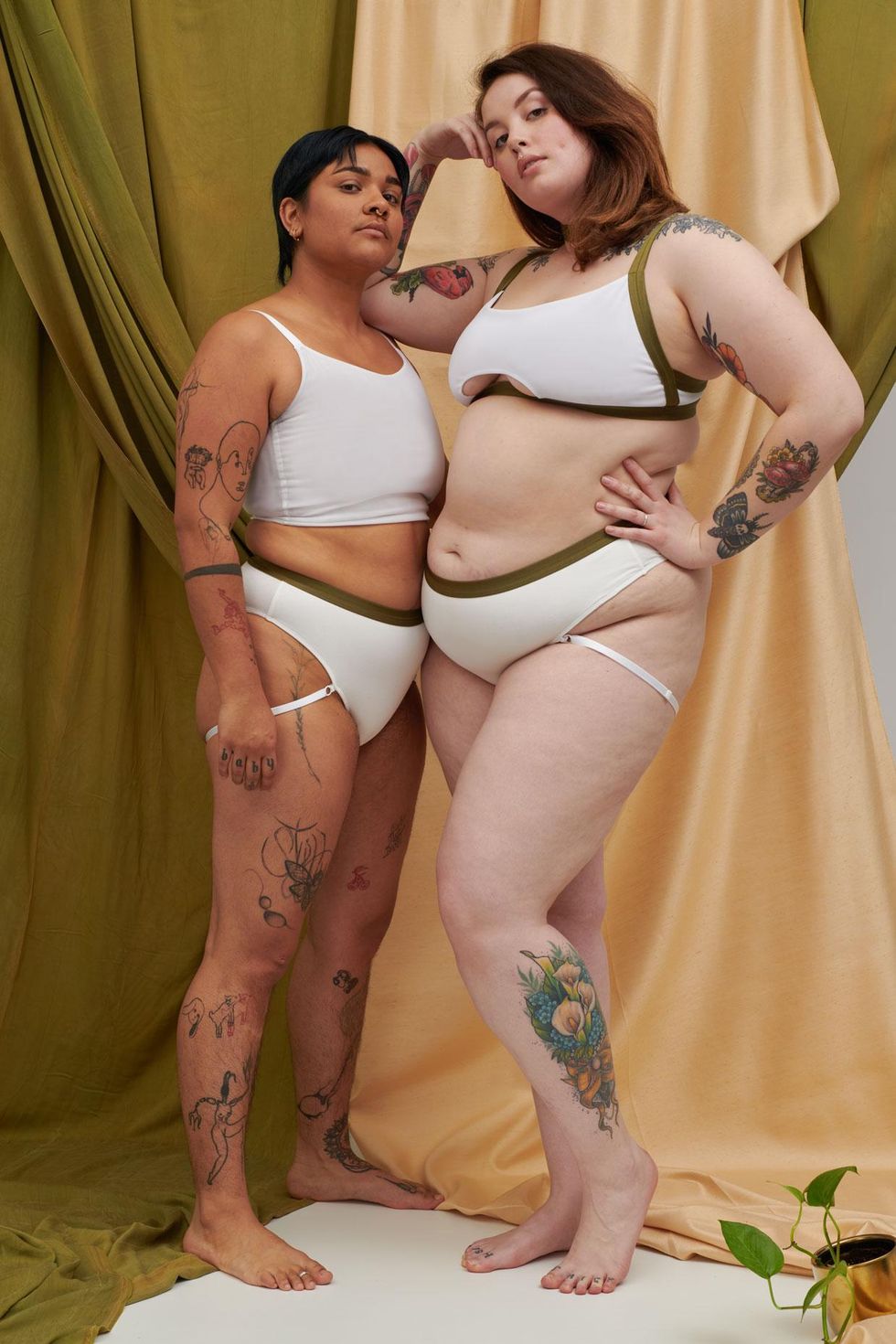
Photos: Courtesy of Origami Customs

What do you want people to learn from your brand, and about genderless undergarments as a whole?
"As a whole, [genderless] doesn’t have to be restrained into an androgynous middle ground, which is what often gets done in a very reductionist fashion. Because we do basics, sometimes it comes down to things that are simply patterned, but my idea is that it becomes a foundation of a really rich creative process for people who self-identify through fashion. My hope is that these garments can create the inner-strength and inner-confidence that allow people to layer on top of things that make them feel really powerful, beautiful, incredible, and worthy."
Where do you hope the brand will be in five years?
"We have a different approach to growth. Where I really want to go is to push the community program and work with lots of other NGOs to reach places we haven’t been able to reach. For me personally, it has a lot to do with education as well. I’m trying to be more vocal about what I do and why I do it, which is a little scary for me. I’m not much of a [public] speaker, but [my goal is] to be involved in more of a mainstream conversation in hopes to inspire people to take a different approach to fashion."

